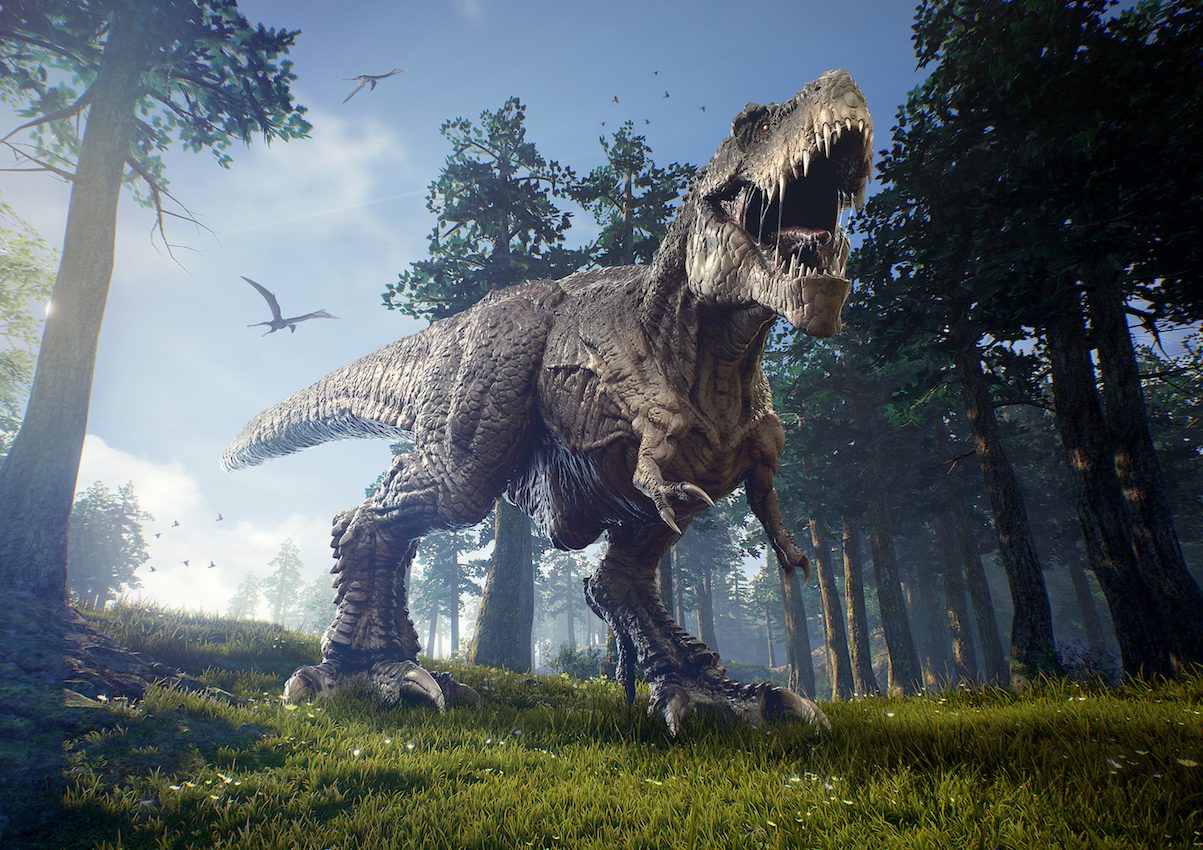
The secret to T. rex’s impressive bite was a stiff skull
Tyrannosaurus rex was once a formidable predator. With a mouth full of serrated teeth, a six-foot-long skull, and a bite that could shatter bone with one crunch, there’s a good reason this mighty carnivore ruled supreme during the Cretaceous period.
The bite force of T. rex was around six tons, but how it was able to clamp down with such brute strength and not damage its flexible skull has long puzzled researchers.
It turns out that Tyrannosaurus rex’s skull wasn’t loosely jointed, similar to modern-day birds, as was previously thought. Instead, researchers from the University of Missouri have discovered that T. rex had a rigid skull, allowing it to tear easily through the scales, flesh, and bones of its prey.
“Previous researchers looked at this from a bone-only perspective without taking into account all of the connections — ligaments and cartilage — that really mediate the interactions between the bones,” said Kaleb Sellers, an author of the study.
The researchers used imaging and data on anatomy and engineering to create digital models of T. rex skulls. Some of the skulls had palates that were flexible and moved like modern-day parrots or geckos.
Then the researchers used the models to simulate chewing and see the skulls in action.
In order to achieve a forceful bite without cracking its own skull, the roof of the mouth would have had to be rigid with very little flexibility.
“When you put a lot of force on things, there’s a tradeoff between movement and stability,” said Casey Holliday, a co-author of the study. “Birds and lizards have more movement but less stability. When we applied their individual movements to the T. rex skull, we saw it did not like being wiggled in ways that the lizard and bird skulls do, which suggests more stiffness.”
The study, published in the journal the Anatomical Record, not only helps set the record straight for T. rex but could also aid future anatomy research.
“In humans, this can also be applied to how people’s jaws work, such as studying how the jaw joint is loaded by stresses and strains during chewing,” said Ian Cost, the lead researcher. “In animals, understanding how those movements occur and joints are loaded will, for instance, help veterinarians better understand how to treat exotic animals such as parrots, which suffer from arthritis in their faces.”
—
By Kay Vandette, Earth.com Staff Writer
Image Credit: Shutterstock/Herschel Hoffmeyer













